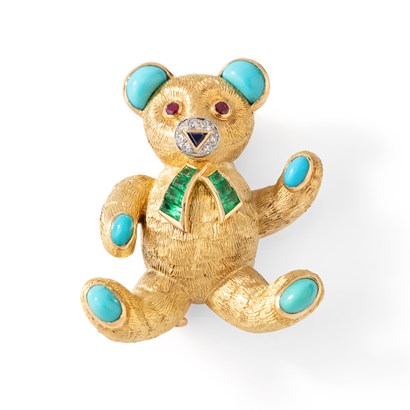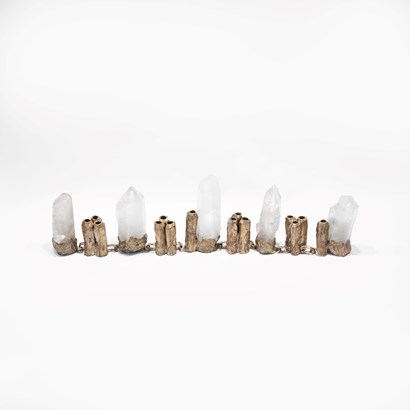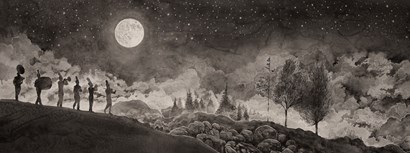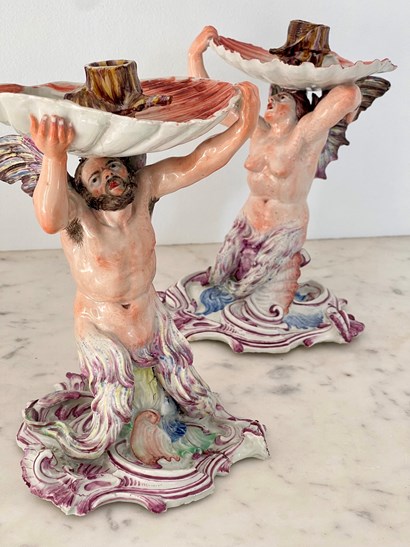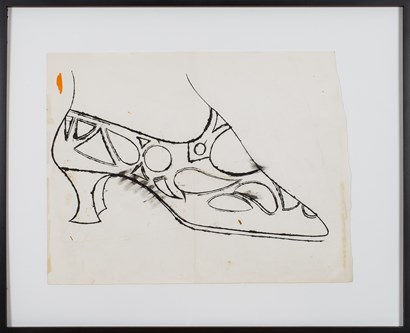This section will be available this Autumn.

Galerie Perrin
oskar bergman
Oskar Bergman (Stockholm 1879-1963 Saltsjöbaden) The Lagan from Laholm, 1925 Watercolour and gouache on paper 19 x 30.5 cm Signed and dated lower right: Oskar Bergman, Lagan Fran Lahollni, April 1925 Provenance: private collection There are artists who throw themselves wholeheartedly into the various currents during the course of their lives, following the frenetic rhythm of fashions, becoming the icons of an historical moment or a particular group. Others, conversely, take a vow of fidelity to their nature, far removed from the ephemeral unfolding of art, working and meditating as if in a kind of reclusion on a subject to which they devote their entire work. Oskar Bergman belongs to the latter category. His long and prolific career was nothing more than a variation on the theme of landscape, interpreted in a highly personal style that is instantly recognisable, the result of his self-taught training and few outside influences.

Van Pruissen Asian Art
yoshitsugu
Hattori Taira Yoshitsugu Yagami School Tsuba with 'Thousand Monkeys' Carved iron Japan, late 18th century Ø 7.1 cm Signed 'Yoshitsugu' An iron tsuba intricately carved in openwork (nikubori ji-sukashi) with a lively multitude of monkeys, including the famous Three Wise Monkeys. Their eyes and the rim are accented in gold using nunome-zōgan. The maker, Hattori Taira Yoshitsugu, was a pupil of Yagami school founder Noda Mitsuhiro and teacher of Onitake Toshiyoshi. The Yagami school, active in Nagasaki in the late 18th century, is renowned for its 'Thousand Monkeys' motif, as also seen in a comparable example in the Metropolitan Museum of Art (inv. n° 91.1.751).
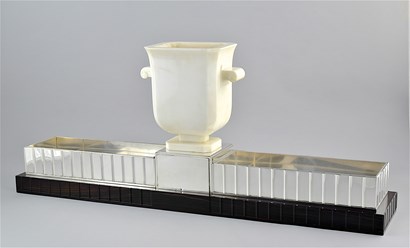
Francis Janssens van der Maelen
Maurice Daurat (Bordeaux 1880-1969 Meulan-en-Yvelines) Art Deco table centrepiece Paris, circa 1927-1931 Sterling silver, Macassar ebony, marble H 42.5 x W 104 x D 20 cm This striking early 20th century French silver and alabaster centrepiece on a Macassar ebony base is a superb example of Art Deco design. Designed by Maurice Daurat in Paris, circa 1927-1931. Maurice Daurat was famous for his limited editions and large commissioned works. His style is characterised by geometrical, strict shaping, emphasising volume and material.

Collectors Gallery
Arman (Nice 1928-2005 New York) Capricorn brooch in gold Zodiac collection, 1994 Certificate of authenticity and copy of the artist’s original drawing on the letterhead of the Hôtel Lutetia, where the artist resided and designed the models for this collection Provenance: Galerie Pierre-Alain Challier, successor to Editions Artcurial
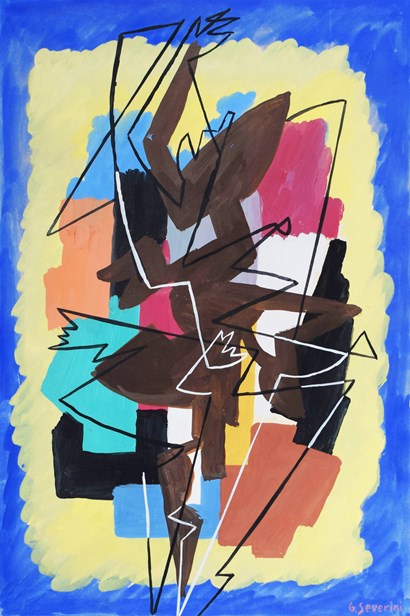
Gilden's Art Gallery
Gino Severini (Italy, Cortona 1883-1966 Paris, France) The dancer, 1959 Tempera painting on wove paper 39.5 x 28.5 cm Signed lower right 'G. Severini' and dedicated in pencil ‘al caro vecchio amico Raffaele Carrieri, affectuoso riccordi di Gino Severini’ [to a dear old friend Raffaelle Carrieri, with affectionate memories, Gino Severini] in the lower right corner The work comes with a photo-certificate of authenticity by Romana Severini Brunori dated 13 May 2025 Provenance: the celebrated poet Raffaele Carrieri (1905-1984); private collection, Milan

Thomas Deprez Fine Arts
jean delville
Jean Delville (Leuven 1867-1953 Brussels) Aveugle, 1888 Oil on canvas 65 x 81 cm Signed and dated l.l.: 'Jean Delville / 1888' Relined, with a fair amount of retouching Provenance: private collection, Brussels, since three generations. Exhibitions: Salon de Gand, XXXIVe Exposition Triennale, Ghent, 1889, cat. n° 166, as: 'Aveugle'; L'Essor, XIIIe exposition annuelle, Brussels, 1889, cat. n° 4, as: 'Aveugle' PRESS F.N., 'Chronique Artistique', dans: Journal de Bruxelles, 24/03/1889, p. 5 (Supplément au Journal de Bruxelles du 24 mars 1889): 'L'Aveugle, la femme si visiblement plongée en des pensées lourdes et étroites, qui se chauffe [...]'

Repetto Gallery
valerio adami
Valerio Adami (Bologna, 1935) La firma del muro antico, Odisseo (per E. Pound), 1977 Acrylic on canvas 204 x 152 cm Signed, dated and titled on the reverse: Adami 8.8.77 17.11.77 La firma del muro antico. Odisseo (per E. Pound) Label on the reverse by Galerie Rive Gauche Marcel Strouk, Paris Certificate of authenticity by Archivio Valerio Adami n° 878 Provenance: Galerie Maeght, Paris; private collection, France (acquired from the above) Exhibition: Valerio Adami, 7 October-12 November 1978, Palais des Beaux-Arts, Charleroi; Valerio Adami. Ripensando la realtà, Dep Art Gallery, Milan, 6 March-17 May 2025

Hoffmans Antiques
Chandelier in the 'Retour d’Égypte' style Paris, early 19th century Attributed to Benjamin Ladouèpe-Dufougerias and the 'Manufacture de Cristaux de Montcenis' Ormoulu, patinated and fire-gilt bronze for twelve candles H 130 cm - Ø circa 80 cm Provenance: private European collection This magnificent chandelier exemplifies the short-lived yet influential 'Retour d’Égypte' style, which emerged in the wake of Napoleon’s Egyptian campaign (1798–1801). At its centre stands an amphora-shaped patinated urn, crowned with a flaming finial and surmounted by a pinecone. From the urn’s body spring twelve elegantly curved candle arms arranged in two tiers, richly ornamented with foliage motifs and set between four stylised Egyptian masks. The chandelier is suspended by four chains leading to an imposing corona adorned with leonine masks and voluted floral decoration. The style was largely shaped by the architects Charles Percier and Pierre François Léonard Fontaine, whose neoclassical designs laid the foundation for this decorative vocabulary. It endured only briefly before giving way to the Empire style with the establishment of Napoleon and the First French Empire. Provenance and Comparanda: A closely related chandelier for twelve lights, attributed to the Manufacture de Cristaux de la Reine, is preserved in the collections at Versailles, formerly installed in Marie-Antoinette’s inner cabinet at the Petit Trianon.
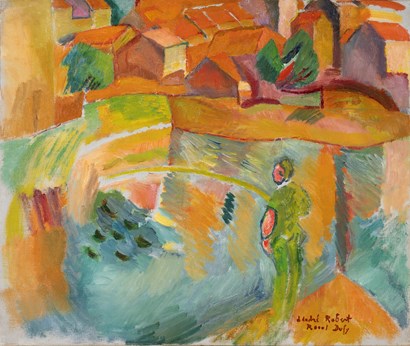
HELENE BAILLY MARCILHAC
raoul dufy
Raoul Dufy (Le Havre 1877-1953 Forcalquier) Le Pêcheur, 1907 Oil on canvas 46 x 55 cm Dedicated and signed lower right, to André Robert, Raoul Dufy Certificate of authenticity issued by Madame Fanny Guillon-Laffaille, dated December 17th, 2003 Provenance: private collection Literature: M. Laffaille, Raoul Dufy, Catalogue Raisonné de l'Oeuvre Peint, vol. I, Geneva, 1972, ill. n° 152, p. 136
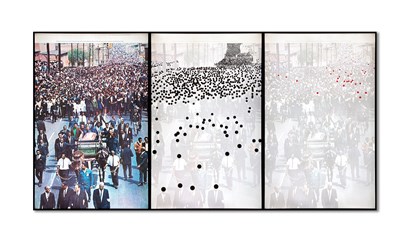
Galerie La Patinoire Royale Bach
alfredo jaar
Alfredo Jaar (Chili, Santiago 1956) Life Magazine, 19 April 1968 1995 Three lightboxes, analog C-print on Duratrans 183 x 360 cm (entire dimension) 183 x 120 cm (one lightbox) Unique piece Life Magazine, 19 April 1968 (1995) by Alfredo Jaar is one of the Chilean artist’s iconic lightbox works in which he pointillistically engages an image from the public archive, intervening with his signature cutting precision to highlight social inequities and the politics of image making. The source image for this work is a documentary photograph of Martin Luther King’s funeral printed in 1968 in Life Magazine, the magazine of reference for a generation of Americans. In the image, a horse drawn casket is surrounded by supporters, and behind, a crowd fills the boulevard, stretching into the vanishing point beyond. It is a powerful representation of the late civil rights leader’s influence. The source photograph is presented large scale on the left third of the lightbox. In the center, the image is whited over, and in the place of faces in the crowd are black dots, massing and overflowing the street. In the rightmost part of the triptych, the source image is similarly whited out, but this time only a smattering of red dots appear — a handful scattered across the crowd. The artist placed black dots on the faces of African Americans. The red dots highlight White attendees. Created while Jaar was researching the Life archives for another iconic lightbox work, Searching for Africa in Life (1996), in which the artist reprints every cover of the magazine, highlighting through the punctum of the title the glaring absence of adequate representation of the continent, Life Magazine, 19 April 1968 (1995) similarly makes manifest a glaring absence. Through the precision of the artist’s intervention, and rendered in the artist’s signature clean lines, a singular gesture evokes the imbroglia of lingering racism and inequality in contemporary society.
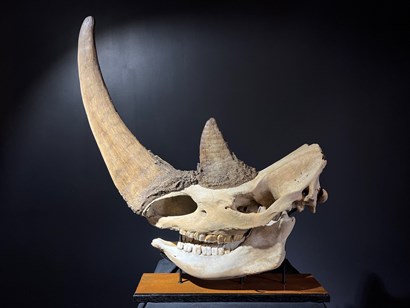
Stone Gallery
Woolly rhinoceros skull Approx. 50.000 years old 100 x 100 x 35 cm Origin: Siberia This woolly rhinoceros skull is approximately 50,000 years old, belonging to one of the most impressive mammals in the recent history of Northern Europe and Northern Asia. There were even people who lived alongside these giants between around 30,000 and 15,000 years ago! Stone gallery has previously conducted expeditions in various countries but recently acquired this skull through a swap with a local museum. Roy says, 'It is the best-preserved and most complete skull I’ve ever seen. Even the teeth are all original.' Researchers and students from Maastricht University have digitised mammoth and rhinoceros fossils from the Ice Age, including this skull. With this technique, it’s possible to bring these extinct species back to life in motion and conduct new studies. 'We’re investigating how strong the bone structure is. For this, we use Finite Element Analyses, a method commonly applied in the construction of buildings and bridges. The study explores the forces exerted on the bones, such as during chewing. This helps us predict how and what the animal ate, as well as how well it was adapted to its enormous size.' - Paleontologist Dr. Jesse Hennekam, Assistant Professor, Maastricht University -
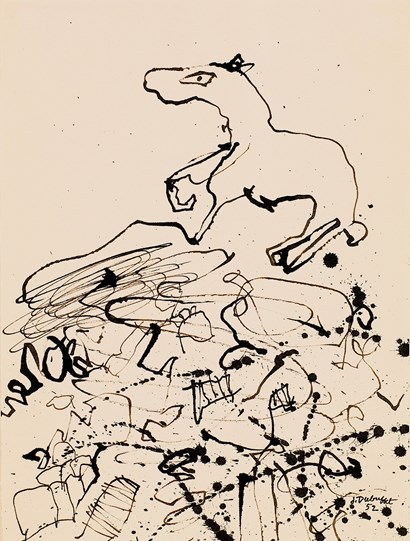
Galerie des Modernes
jean dubuffet
Jean Dubuffet (Le Havre 1901-1985 Paris) Terrain au Cheval 1, 1952 Indian ink (calame) on paper 30 x 22.5 cm Signed and dated lower right 'J. Dubuffet 52' Provenance: Pierre Matisse Gallery, New York, USA; Acquavella Modern Art, Reno, USA; Andrew and Christine Hall collection, Connecticut, USA; private collection, France; private collection, Belgium Literature: Max Loreau, Catalogue des Travaux de Jean Dubuffet, fascicule VII, Tables paysagées, paysages du mental, pierres philosophiques, Les Éditions de Minuit, Lausanne 1979, descr. and repr. on p. 109, n° 169 Exhibitions: Miro: early drawings collages 1919-1949 - Dubuffet: early drawings collages 1943-1959, Pierre Matisse Gallery, New York, November-December 1981; Dubuffet-Miro: selections from the Acquavella collection, Nevada Museum of Art, Reno, July-September 1997
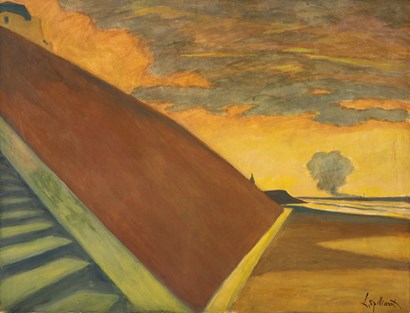
Van Herck-Eykelberg
leon spilliaert
Léon Spilliaert (Ostende 1881-1946 Brussels) The stairs with yellow twilight, 1922 Watercolour and gouache on paper 78 x 59 cm Signed lower right The authenticity of this work is confirmed by Dr. Anne Adriaens-Pannier and will be included in the forthcoming catalogue raisonné currently in preparation Provenance: Madeleine Spillaert, Brussels; Bounameaux Art Consultants, Brussels; private collection, Brussels; thence by descent
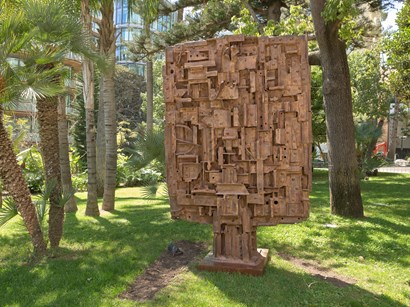
Galerie Patrice Trigano
césar
César, alias César Baldaccini (Marseille 1921-1998 Paris) Hommage à Eiffel, 1989 Welded bronze Bocquel foundry 280 x 200 x 55 cm Signed and numbered Provenance: acquired from the artist in 1990 Literature: P. Restany, César, éd. De la Différence, Paris, 1988, p. 65 and p. 328 (Monumental version of Cartier Foundation, photography in progress); B.-H. Lévy, César, les bronzes, Éditons de la Différence, Galerie Baubourg, Paris, 1991, p. 24; César, Oeuvres de 1947 à 1993, Musée de Marseille, Réunion des Musées Nationaux, Marseille, 1993, p. 159; César, Galerie Enrico Navarra, Paris, 1996, pp. 76-77; César, Museu Brasileiro da Escultura Marilisa Rathsam, São Paulo, 1999, p. 212; Paris, Centre Georges Pompidou, César la rétrospective, December 2017- March 2018, p. 173; Archives Denyse Durand-Ruel, n° 4499 Exhibitions: Marseille, centre de la Vieille Charité, César, oeuvres de 1947 à 1993, July-September 1993, p. 159; Monte-Carlo, César à Monte-Carlo, May-September 1993, (unnumbered); Luxembourg, Dexia Banque Internationale, Hommage à César, October-December 2000, p. 70; Cannes, La Malmaison, César, l’oeuvre de bronze, July-October 2002, p. 86; Travelling exhibition: Cannes, parvis du palais des Festivals, July-September 2002; Geneviève, Galerie Artrium, September-December 2002; Rabat, Musée Mohammed VI d’Art Moderne et Contemporain, César, une histoire méditerranéenne, December 2015-March 2016, reproduced in colour p. 68 and p. 70
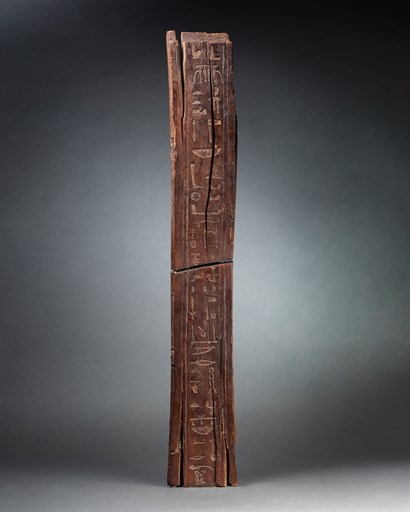
Desmet Fine Arts
Two fragments of a wooden sarcophagus corner post of the Priest Horudja re-united after 50 years Wood Egypt, late Dynastic period, 26th Dynasty, circa 664-525 BC H 92 x W 15 x D 5.5 cm Accompanied by Art Loss Register certificates: S00238635 & S00238636 Provenance: Fragment A: Chakib Slatine, Paris (acquired 1975); private collection, Paris (acquired 1977). Fragment B: Chakib Slatine, Paris (acquired 1975); private collection, Paris (acquired 1977); Ede Gallery, London (of which acquired in 2020)

Galerie Boulakia
Joan Miró (Barcelona 1893-1983 Palma) Des figures devant la lune, 1942 Pastel, gouache, wash, brush, ink, and pencil on paper 64.5 x 48.5 cm Signed 'Joan Miró' (lower right) Dated 'X Barcelone, 18-12-1942' and titled on reverse Certificate of authenticity from ADOM dated 13 July 2018 Provenance: Pierre Matisse Gallery, New York; Galleria Narciso, Turin Exhibitions: Traveling exhibition Japan, 1984, reproduced cat. n° 17; Ferrara, Palais des Diamants, Joan Miró, 1985, n° 81; Cherasco, Palazzo Salmatoris, Chagall, Miró, Magritte : La Poesia del Sogno, September-December 2005; Paris, Exhibition Jean Louis Prat-Galerie Lelong, Grand Palais, September-October 2018; Mons, Musée des Beaux-Arts de Mons, Belgium, Exposition Joan Miro : L’essence des choses passées et présentes, October 2022-January 2023, repr. in cat. Literature: Jacques Dupin, Ariane Lelong-Mainaud, Joan Miro : catalogue raisonné, Volume II, 1931-1941, Editions Maeght-Lelong, Paris, 2000; Joan Miró exhibition catalogue, L'essence des choses passées et présentes, Editions BAM, Musée des Beaux-Arts de Mons, Belgium, 2022

Galerie AB - Agnès Aittouarès
Sam Francis (California, 1923-1994) SF63-046, 1963 Acrylic on paper 90 x 63 cm Signed, dated and located Los Angeles on reverse Listed in the online catalogue raisonné of the artist under n° SF63-046 Provenance: Jean Fournier collection; private collection, Paris Exhibition: Paris, Galerie Jean Fournier, Sam Francis de 1947 à 1988 sur papier, October-November 1988
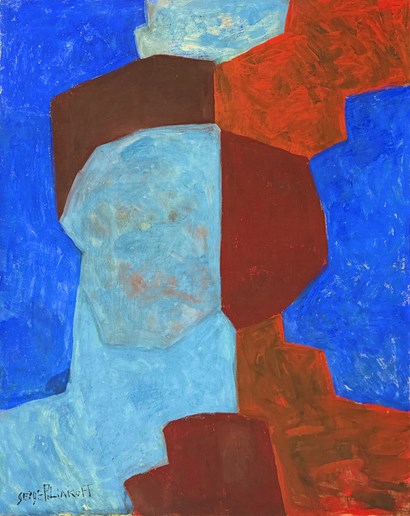
Galeria Jordi Pascual
Serge Poliakoff (Moscow 1900-1969 Paris) Abstract Composition, 1967 Oil on canvas 92 x 73 cm Signed lower left This work includes a photo-certificate of authenticity issued by the archives Serge Poliakoff in 2024 Provenance: Studio Bellini, Milan Literature: Poliakoff, Alexis, 'Serge Poliakoff – Catalogue Raisonné', Volume V, 1966-1969, Munich 2016, p. 236, n° 67-101
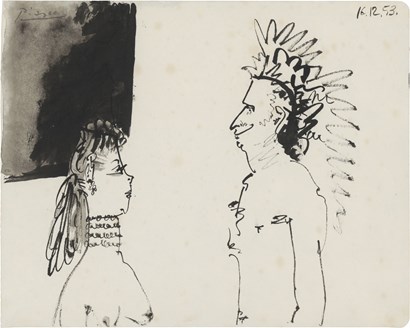
Galerie AB - Agnès Aittouarès
pablo picasso
Pablo Picasso (Malaga 1881-1973 Mougins) Two characters, séduction, 1953 Produced in Cannes on 16 December 1953 Ink on paper 20.9 x 26.4 cm Signed upper left and dated upper right Provenance: Scheffel Gallery, Bad Homburg, Germany; private collection, acquired from the Scheffel Gallery in 1989; private collection; private collection, Paris Literature: Christian Zervos, Pablo Picasso. Œuvres de 1953 à 1955, vol. 16, Paris, 1965, n° 57, p. 20; Dore Ashton, Picasso on Art: A Selection of Views, New York, 1972, p. 125




